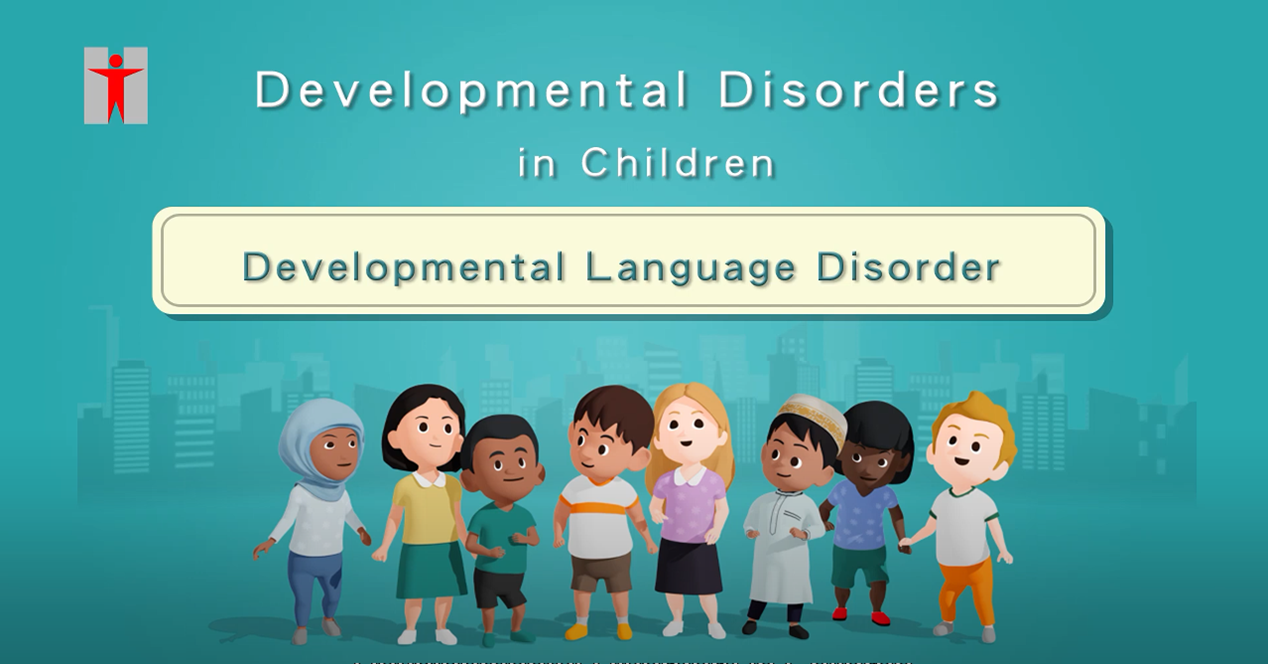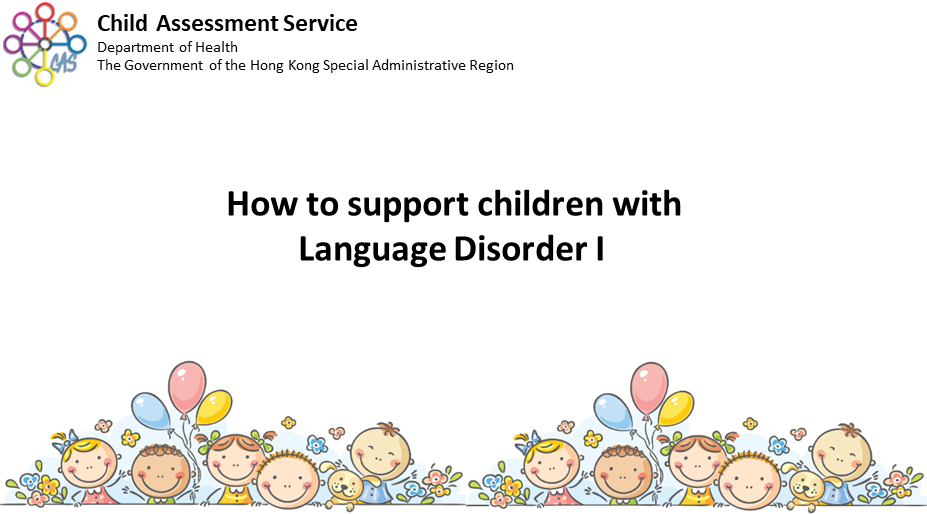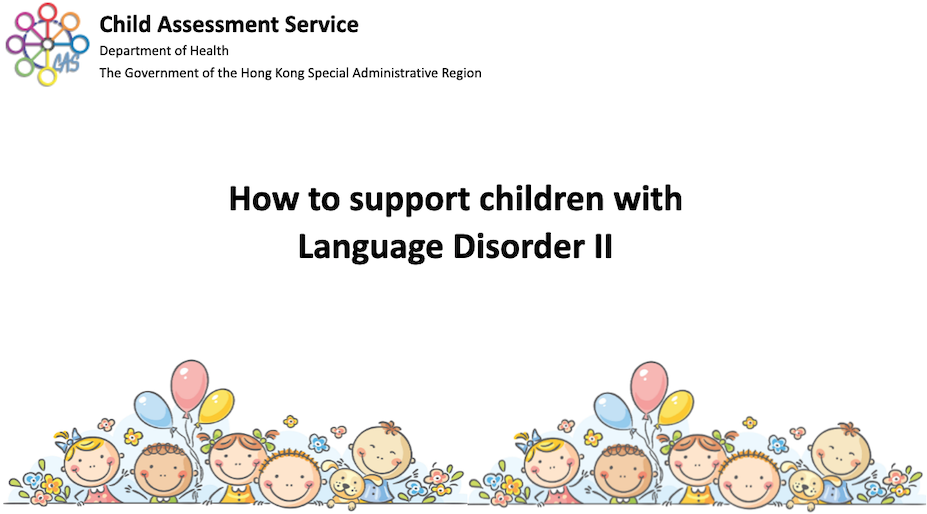Developmental Language Disorder
Developmental Language Disorder (DLD) refers to the condition where children fail to show typical language development when there are no obvious accompanying causative conditions such as intellectual disability, neurological damage, hearing impairment, serious emotional disorders or environmental deprivation. It is also referred to as Specific Language Impairment in many studies. DLD is one of the most common childhood disorders and is closely related to other learning and reading disorders, including dyslexia.
Children with DLD are delayed in the use of single words, acquiring their first words at an average age of 1 year 11 months in contrast to the average of 11 months in typically developing peers. Local and oversea research showed that preschool children with DLD use less word varieties than their typical peers. Children with DLD have well-documented problems in comprehension of wh-questions and sentences with relative clauses and passive voice structures. More tense-agreement errors are observed. In addition, children with DLD are more likely to show phonological errors and speech sound problems. Many show varying degrees of weakness in social and pragmatic language skills. Children with DLD may have difficulty in following complex directions, reporting events and when participating in discussions and presentations.
With their impairments in verbal comprehension and expression, children with DLD face difficulties in initiating and maintaining every day conversations, which in turn affect their social development. As language is a major tool for knowledge acquisition, academic achievement will be affected. Problems with literacy acquisition and developmental dyslexia are more likely to arise in children with DLD. Other common co-occurring difficulties include attention deficit and developmental coordination problems.
In western countries, DLD is reported in approximately 7 out of 100 children. No formal epidemiological data is available to date in Hong Kong. Through a research completed in 2006 for the development of a locally normed and standardized tool for assessing Cantonese speaking school-age children (The Hong Kong Cantonese Oral Language Assessment Scale HKCOLAS), an estimated prevalence of approximately 5% was obtained.
New developments in research are shedding light on the role of genetic and environmental factors in developmental language disorder and its longitudinal course.
Biological factors:
It is believed that DLD is associated with atypical development of brain systems responsible for language function. Underlying genetic factors have been demonstrated, with clustering shown in family and twin studies.
Process mechanisms:
Various deficits in language processing mechanisms have been put forth to explain DLD. These include incomplete learning of particular rules and principles of language, and limitations in general and specific processing capacities leading to weakness in phonological short-term memory and retention of verbal information.
Environmental factors:
While inadequate language input is not considered to be a cause of DLD by most investigators, it is believed that language input can be modified to facilitate growth in language ability. Bilingualism has been postulated as a cause of language delay, but this claim has been largely refuted by bilingual language acquisition research to date.
Language difficulties that arise part and parcel of other conditions may appear similar to the presentations of DLD. These include language problems associated with developmental delay, autism spectrum disorder or hearing impairment. It is important that these possibilities are considered and clarified through comprehensive diagnostic assessment.
Early identification and treatment are important in the management of DLD. A thorough assessment of the overall development of the child is needed to exclude other causes of the language problems, as well as to identify any co-existing conditions. Rehabilitation for children with DLD is mainly provided by speech therapists. The goal of language intervention is to facilitate overall language development and to teach language skills in context of the children’s lives, so as to enhance everyday communication and allow access to academic content. Goals are selected with consideration of developmental appropriateness and their potential for improving communication, academic and social success. Service delivery format (such as individual versus group training), provider (clinician-based, parent-based school/teacher-based), dosage, and timing will be decided to enhance treatment outcomes. Parental involvement during the course of speech therapy is essential. They play a major role in helping these children transfer newly acquired language skills to daily needs and functioning.
Speech therapy for preschool children is available from the Hospital Authority and preschool rehabilitation services provided by the Social Welfare Department, while school-age children can receive speech therapy support in mainstream schools. Therapy is also provided in the private sector for both age groups.
For most children with DLD, gains in language ability are seen over time. However depending on the number of language areas affected and the degree of impairment, weaknesses in language may still be present in later childhood, adolescence, and in some cases, adulthood. Some preschool children with DLD develop dyslexia when they face heavy reading and writing demands by school age. Children whose language significantly lags behind their peers are at increased risk of slower learning and academic underachievement. Parents and teachers need to be vigilant and supportive of the children’s emotional-behavioural development, as problems may arise as a result of their language and communication problems.
-
Family Health Service, Department of Health
http://www.fhs.gov.hk/ -
Special Education Resource Centre, Education Bureau
http://www.edb.gov.hk/serc -
One Click
http://oneclick.hku.hk -
What is Specific Language Impairment? (Cantonese version) RADLD
https://www.youtube.com/watch?v=6AEqa0aM-gw -
RADLD
https://www.youtube.com/user/RALLIcampaign -
American Speech-Language-Hearing Association
http://www.asha.org -
Afasic
http://www.afasic.org.uk/ -
Talking Point
http://www.talkingpoint.org.uk/ -
The Hanen Centre
http://www.hanen.org
- Conti-Ramsden, G., Mok, P., Pickles, A., & Durkin, K. (2013). Adolescents with a history of specific language impairment (SLI): strengths and difficulties in social, emotional and behavioral functioning. Research in Developmental Disabilities, 34, 4161–4169.
- Durkin, K., Conti-Ramsden, G., Simkin, Z. (2012). Functional outcomes of adolescents with a history of specific language impairment (SLI) with and without autistic symptomatology. Journal of Autism and Developmental Disorders, 42, 123–138.
- Klee, T., Stokes, S. F., Wong, A., Fletcher, P., & Gavin, W. J. (2004). Utterance length and lexical diversity in Cantonese-speaking children with and without specific language impairment. Journal of Speech, Language, and Hearing Research, 47, 1396-1410.
- Leonard, L. B. (2014). Children with specific language impairment. Cambridge, Massachusetts: MIT Press.
- Norbury, C. F., Gooch, D., Wray, C., Baird, G., Charman, T., Simonoff, E., Pickles, A., et al. (2016). The impact of nonverbal ability on prevalence and clinical presentation of language disorder: evidence from a population study. Journal of Child Psychology and Psychiatry, 57, 1247-57.
- Rice, M. L., & Warren, S. F. (2004). Developmental language disorders: From Phenotypes to Etiologies. Honolulu, US: Lawrence Erlbaum Associates.
- Tomblin, J. B., Records, N. L., Buckwalter, P., Zhang, X., Smith, E. & O’Brien, M. (1997) Prevalence of specific language impairment in kindergarten children. Journal of Speech, Language and Hearing Research, 40, 1245–60.
- Webster, R. I., & Shevell, M. I. (2004). Topical review: Neurobiology of specific language impairment. Journal of Child Neurology, 19(7), 471-481.
- Yew, S. G., & O’Kearney, R. (2013). Emotional and behavioural outcomes later in childhood and adolescence for children with specific language impairments: Meta-analyses of controlled prospective studies. Journal of Child Psychology and Psychiatry, 54, 516–524.
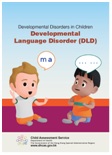
Short Factsheet
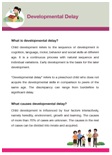
Long Factsheet
